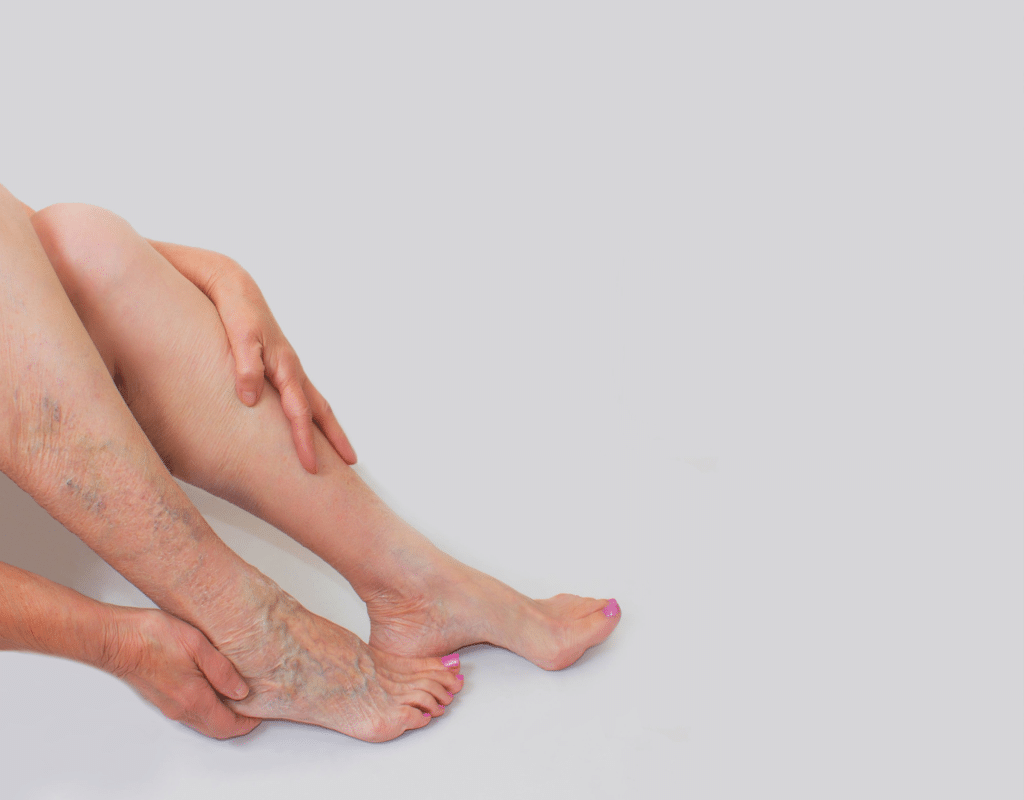If you have varicose veins, reading about deep venous thrombosis (DVT), pulmonary embolism (PE) and peripheral artery disease (PAD) can seem scary. However, knowledge is power, so continue to educate yourself and consult with a vein specialist to ensure you know the facts and have the treatment and care plans in place to live your best life! Note that varicose veins are not always visible, so if your legs are swollen, tired, heavy, red in spots, and/or warm to the touch, get to a doctor right away.
Varicose veins are rarely associated with serious health risks. In contrast, DVT, PE, and PAD are serious vein diseases that must be carefully monitored and cared for.
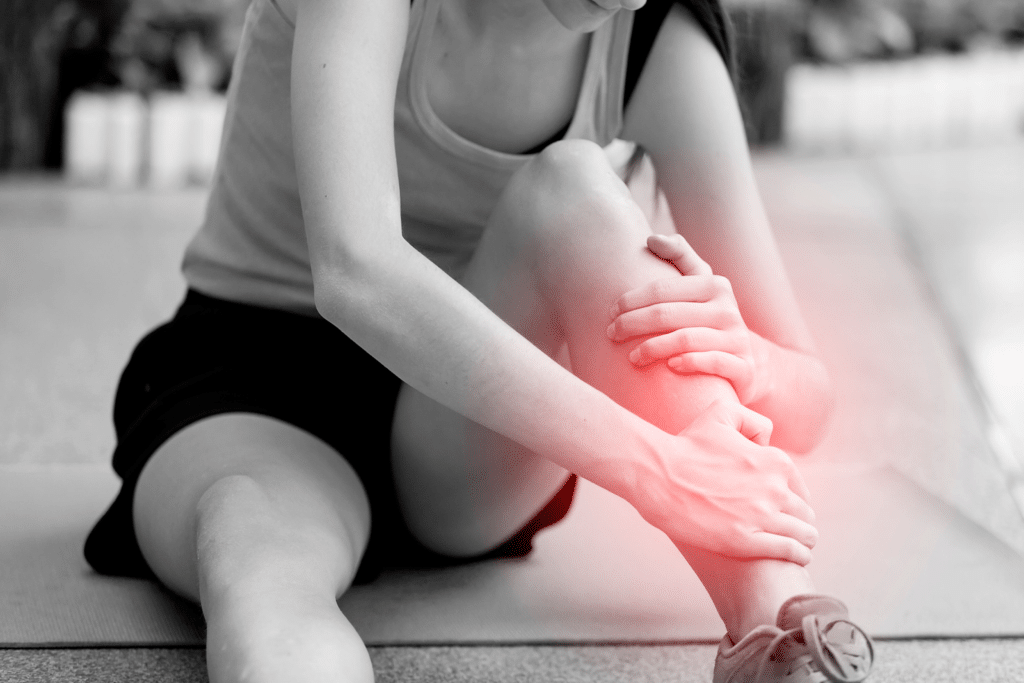
It is well known that dilated varicose veins, where the blood does not flow properly, are associated with superficial phlebitis. Superficial phlebitis are blood clots in superficial veins. Superficial phlebitis is associated with or causes Deep Vein Thrombosis DVT also known as Deep Vein Phlebitis in approximately 25 % of episodes of superficial phlebitis. DVT is a clot in a deep vein that can break off and travel to the lung. This occurs in a little under 10% of the time. When a blood clot travels to the lung it is called a Pulmonary Embolism, PE. That all makes sense and is well known. However, the connected PAD is newer and somewhat surprising.
How Varicose Veins Are Related to Vein Disease
Studies show a connection between varicose veins and DVT. It is not as clear with PE, and further research is needed. With severe varicose veins, there is a risk that DVT may occur. DVT increases the risk of Pulmonary Embolism, a serious condition when a blood clot breaks off of a Deep Vein Thrombosis, DVT. A study published in the Journal of the American Medical Association (JAMA) shows people with varicose veins are five times more likely to develop DVT.
People with varicose veins have increased inflammation and this is also associated with DVT, PE, and PAD. Previous studies evaluating the connection between varicose veins and venous and arterial disease were cross-sectional or case-control studies, had relatively small sample sizes, and did not verify the diagnosis of varicose veins. Limited data is available from studies to investigate the association between varicose veins and the subsequent incidence of vein diseases.

Thankfully, clinicians are learning more as research continues. In a recent study, over 600 patients 20 years and older (70% women, 30% men) showed a significantly increased risk of DVT, PE, and PAD. Previous epidemiological studies have examined the association between varicose veins and the risk of DVT. Plus, a study in Germany reported a 7-fold higher prevalence of DVT in over 2,300 patients with varicose veins and another case-control study of patients 70 years or older reported an increased risk of DVT associated with varicose veins, depending on clinical characteristics such as varicose veins, leg ulcers, and leg edema.
Note: Among adults diagnosed with varicose veins, there was a significantly increased risk of incident DVT; the findings for PE and PAD are less clear due to the potential for confounding. Whether the association between varicose veins and DVT is causal or represents a common set of risk factors requires further research.
Important Definitions For Understanding Your Veins
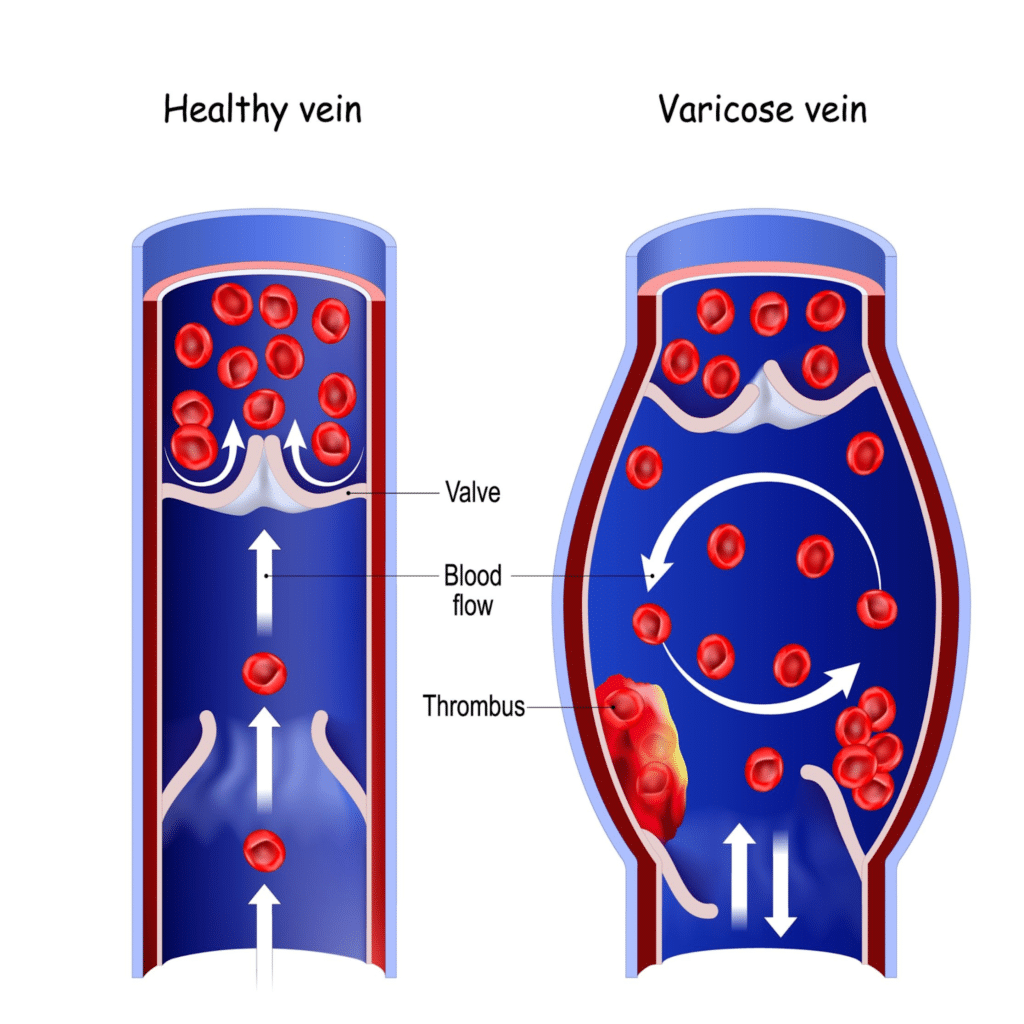
Varicose veins: When blood pools in the vein due to weakened valves that can no longer effectively push blood back to the heart. The swollen vein eventually becomes a visible varicose vein.
Blood clot: The ability of blood to form a clot is beneficial to preventing excessive bleeding after an injury. If left untreated, blood can continue to pool and thicken in the varicose vein, leading blood cells to cluster into clots. These blood clots can be dangerous when they stop blood from flowing to your tissues and organs.
Superficial Thrombophlebitis: A type of blood clot with inflammation just under the skin, often in the leg, symptoms include pain, swelling, and redness. Not considered a serious medical condition and can occur after an injury or other stress to the vein. Treatment options include rest, elevation, or compression stockings. A warm compress can ease the pain until it dissolves.
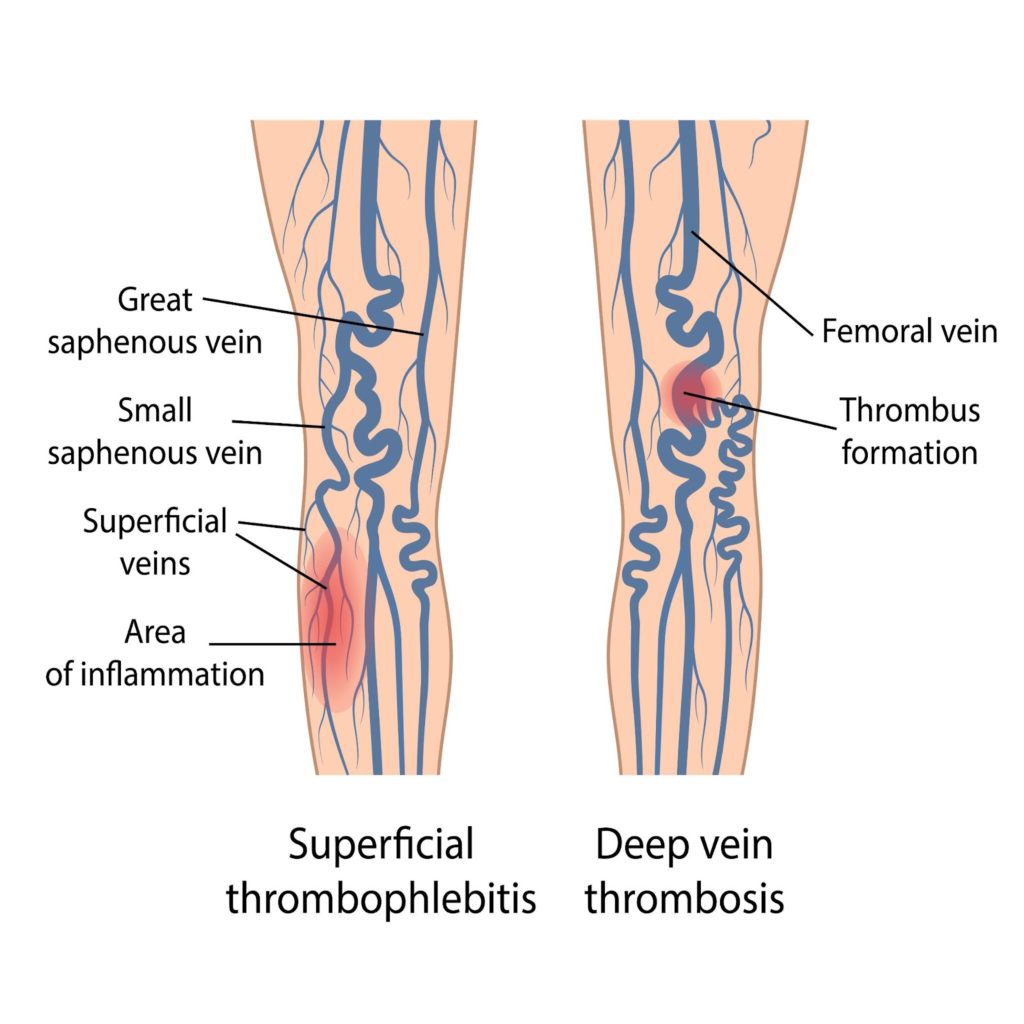
Deep Vein Thrombosis: DVT, a type of blood clot, forms deeper in the leg veins and can become a life-threatening pulmonary embolism if the blood clot breaks away and lodges itself in the lungs. Although symptoms are similar, DVT is more dangerous than superficial thrombophlebitis. If you have varicose veins have a vein specialist evaluate/monitor any swelling or leg pain. The doctor will use an ultrasound exam to assess blood flow through the veins and pinpoint any blocks. Those veins carry more blood and connect to other parts of the body. With DVT, deep calf or thigh pain and swelling of the leg are typical symptoms.
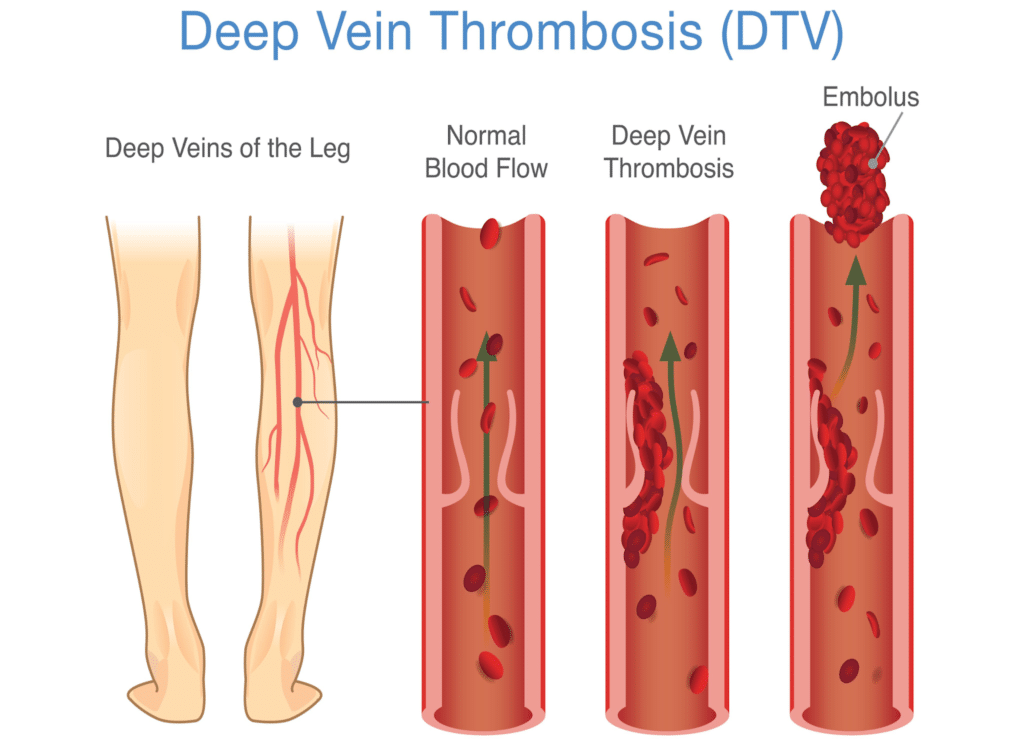
Pulmonary Embolism: PE is an emergency requiring immediate medical attention. Signs of a PE include chest pain, trouble breathing, rapid heartbeat, coughing up blood, and fainting. If you experience these symptoms, visit the nearest emergency room for treatment.
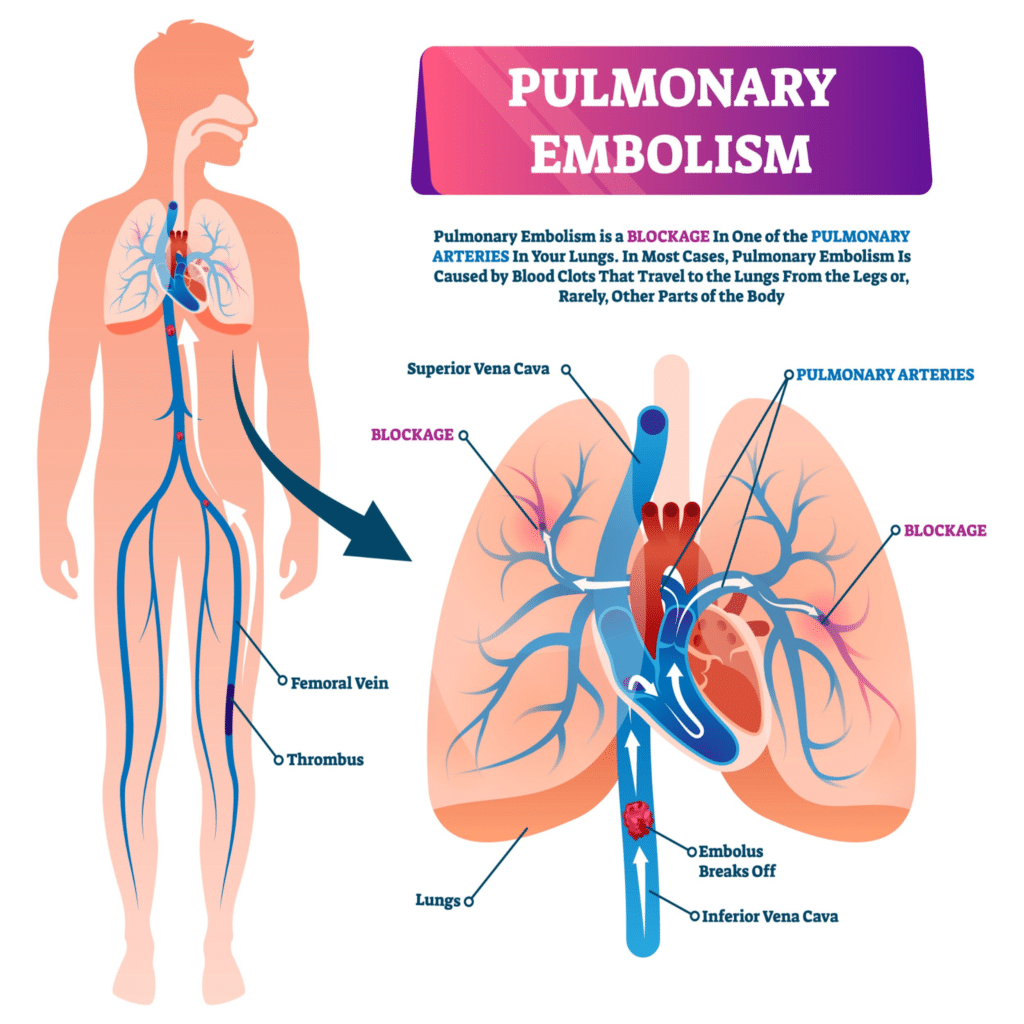
Reduce Clot Risks
- When blood flows smoothly, it is less likely to clot. Exercise prevents blood from slowing down in the vein. Walk, bike, and swim to help veins pump blood.
- Wear compression stockings. Like exercise, the compression gives veins support to pump blood. This is key if you are inactive, like traveling or a desk job.
- Note: obesity and smoking increase your risk of varicose veins and blood clots.
- Maintaining a healthy weight and not smoking will help.
- Protect your vein health. Learn more about DVT, PE, and PAD in relation to varicose veins.
The Many Benefits of Treating Varicose Veins

Without having to worry about the painful process of vein stripping in the modern-day age, patients are free to truly appreciate the many benefits of varicose vein treatment. When it comes to safety, many patients shy away from procedures that require general anesthesia, and fortunately for those looking at vein treatment options, the majority require nothing more than a local anesthetic. This greatly reduces the risks often associated with general anesthesia and makes for a quicker and more painless recovery time for patients in general. The use of laser technologies makes treatment options more efficient and successful than ever before while customized treatment plans have become the new normal, leading to greater long-term results for individuals.
Cost Considerations
The team at the St. Louis Laser Vein Center is happy to provide a variety of in-clinic payment plans and financing options. This can be a beneficial route for those patients whose varicose veins treatment has been deemed exclusively cosmetic by their insurance providers.
Schedule a Consultation Today
There’s no reason to wait when it comes to vein health and care. If you’re considering the many benefits of varicose vein treatment options and wondering if it’s right for you, be sure to schedule a consultation with Dr. Wright. At the St. Louis Laser Vein Center, we believe in comprehensive care and always take individual preferences into account when designing your customized treatment plan. Contact us today for more information on our many services related to vein health and treatment options.
